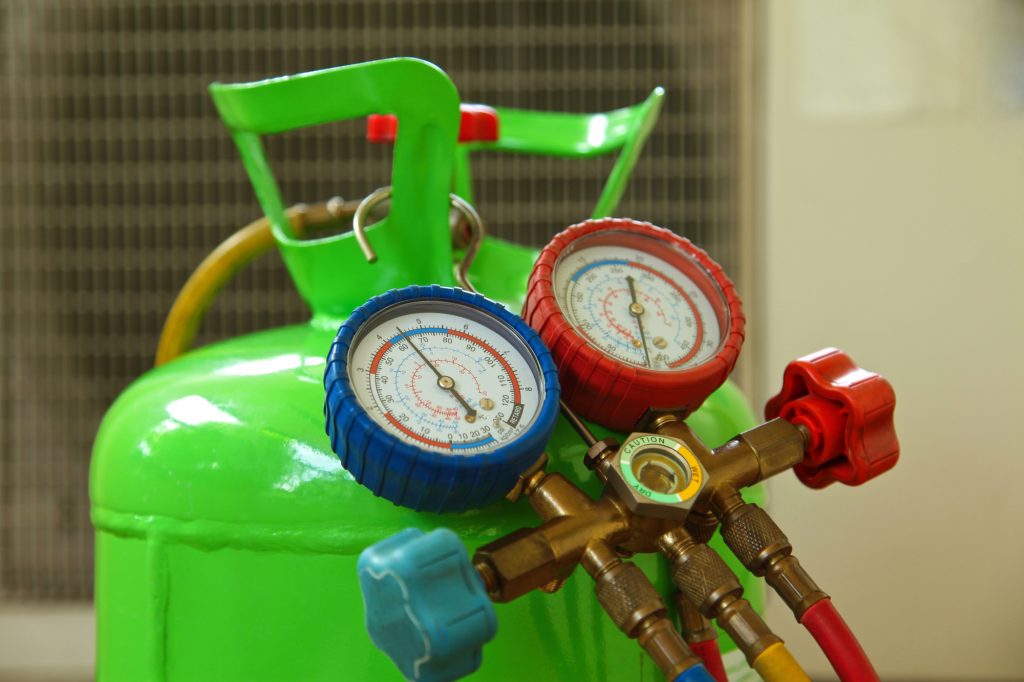Whether your system is overcharged or you’re planning on removing it, there are a number of different reasons one might need to remove refrigerant from their system. If you’re not a professional HVAC technician odds are you probably do not have a refrigerant recovery machine, which can run upwards of a thousand dollars.
While a machine does simplify the process, refrigerant can still be removed by utilizing the system’s compressor, manifold gauges, and a recovery tank. See below for full details.
How To Recover Refrigerant
The first thing you want to do when planning to recover refrigerant from your HVAC system is to get the necessary equipment, that being manifold gauges and a recovery cylinder or tank.
- Make sure your recovery tanks are evacuated or in a vacuum and that you have an inline filter in use on the input of the recovery tank. If you plan on putting the same type of refrigerant that’s already in the tank you do not need to evacuate it, as long as there is room for more refrigerant.
- Connect the high and low side pressure hoses from the manifold gauge to the HVAC unit.
- Connect the yellow service line to the low side of the recovery tank (Blue side.)
- Turn on your air conditioner so the compressor turns on.
- Open the high side on the manifold gauge and the low side service valve on the recovery tank to allow refrigerant to pass through the line into the tank.
- When the pressure stops dropping on the manifold gauges the compressor is not able to push any more refrigerant into the recovery tank and if you would like to empty even more refrigerant out of your HVAC system you will need a recovery machine or a licensed technician to come out and remove the rest of it.
Why Recover Refrigerant?
The refrigerant used for HVAC systems, cars, and even refrigerators causes serious harm to Earth’s ozone layer when it is released into the atmosphere. This is why it is important to recover all refrigerant before opening an air conditioning unit or disposing of one.
In fact, the refrigerant is so harmful to the ozone layer that in 1993 the Environmental Protection Agency, or E.P.A., passed section 608 of the Clean Air Act. This made it so that anybody that deals with or purchases refrigerant has to be a certified and licensed technician. The licensing ensures that the technicians handle refrigerants using safe practices to reduce the amount that is released into Earth’s atmosphere.
These licenses come in four different types which grant the technician different privileges when dealing with refrigerants.
- Type 1
- Small Appliances
- Type 2
- High-pressure heating/AC
- Type 3
- Low-pressure units
- Type 4
- This is a universal licensing that certifies the technician to work on anything that contains refrigerant.
Conclusion
If you plan on opening your air conditioning unit, if it’s overcharged, or if you plan on getting rid of it the first thing you need to do is to remove and safely dispose of the refrigerant so that it does not go into the atmosphere and damage the ozone layer.
This can be done with a rather pricey machine or simply by using the compressor within your HVAC system. Any mistakes in this process could potentially damage the internal components of your unit so it is important to make sure you call a licensed technician to handle the safe removal of refrigerant from your air conditioner.
